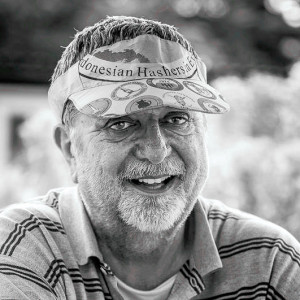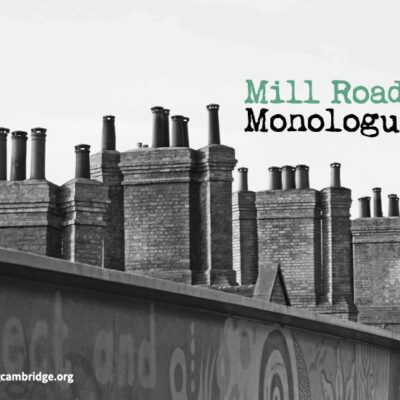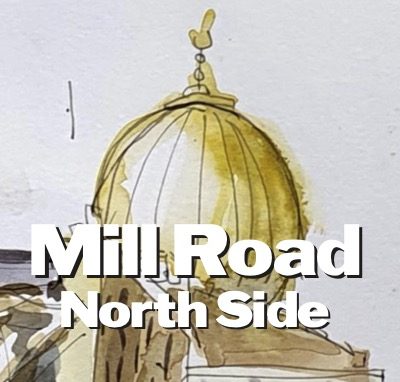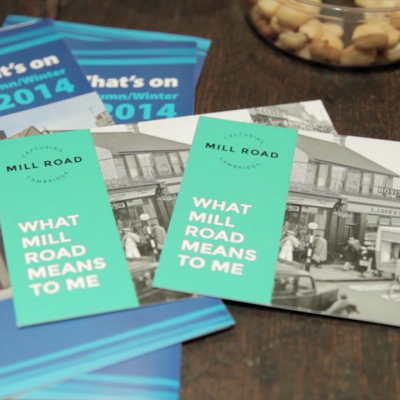Search by topic
- archaeology
- Building of Local Interest
- charity
- church
- crime
- dressmaker
- fire
- Great Eastern Railway
- Listed building
- Mapping Relief
- medieval
- oral history
- poverty
- Public House
- Rattee & Kett
- Religious House
- Roman
- scholar
- school
- Then and Now
- tudor
- women
- work
- world war one
- world war two
Search by text
 Lily Green’s ARP Badge
Lily Green’s ARP BadgeLily Green’s ARP Badge
Lily Green’s ARP badge from the Second World War
This is Lily Green’s ARP badge. It’s made of silver, and was donated to the Mill Road History Project in 2015 by her daughter, Catherine Green.
What was the ARP?
Air Raid Precautions (ARP) was a system set up in the UK to protect the civilian population during raids by German bombers in the Second World War. It consisted of a network of local headquarters throughout the country connected by telephone communications, each having a staff of locally recruited civilian wardens.
What were its duties?
The ARP couldn’t stop the bombing or attack the planes. But it could protect ordinary people in a variety of ways. Its main work was to:
- distribute gas masks and show each person how to fit one in the event of a poison gas attack
- maintain the public air-raid shelters
- guide people to those shelters when air-raid sirens sounded
- patrol streets at night and check that the covering of all windows with black material (“blackout”) was total
- ensure that no lights were visible in the public areas.
ARP wardens were also responsible for assisting injured people during bombing raids, and for advising those whose homes had been bombed where to go and how to seek support. They were trained in basic fire-fighting and first aid. They also assisted the police. Their work was dangerous, and many ARP wardens were killed or injured in the course of duty.
Lily Green, ARP Warden
Lily Green (1890‒1979) lived on Mill Road. There was a local ARP HQ at the corner of Willis Road and Collier Road – now the Sinclair Building of Anglia Ruskin University (ARU). Lily’s jobs included manning the telephone there (having never used a telephone before!) and patrolling the streets at night, which was always done in twos for safety. Lily went with either Dorothy or Bridget Nevinson, who lived on Willis Road. Lily’s patrol walked the local streets of Willis, Guest, Collier, Mackenzie and Mill Roads.
While checking the blackout at fronts of houses, Lily would get her daughter—then a teenager—to run along the back alleys to check for any chinks of light in rear windows, and report back. Lily would then knock on the doors of offending houses, and order occupants to close their blackout curtains completely.
Even before the war began, in 1938, she fitted children with the correct size of gas mask and taught them how to put them on and take them off. (People hated wearing them because they smelled strongly of rubber, and were claustrophobic!) She used to do the fitting in Covent Garden Hall (which is now the Drama Studio of ARU, but was then St Margaret’s School).
There was a Fire Service as well!
Lily’s husband Leo Green (1887-1966) had served in the Royal Navy for 25 years, including fighting throughout the First World War. When war came again in 1939, he served in the Auxiliary Fire Service as a fire warden. He had to man the local HQ in Magdalene Street twice a day, patrol streets for fires, respond to call-outs, and turn out whenever the sirens sounded. His work involved extinguishing fires, rescuing people from burning buildings, and smothering incendiary bombs (bombs that didn’t explode, but set off fires) with sand or water. Another perilous job, often ending in injury or death! And as you can imagine, the ARP wardens and fire wardens often had to work together during bombing raids.
Contribute
Do you have any information about the people or places in this article? If so, then please let us know using the Contact page or by emailing capturingcambridge@
License
This work is licensed under CC BY-NC-SA 4.0

















